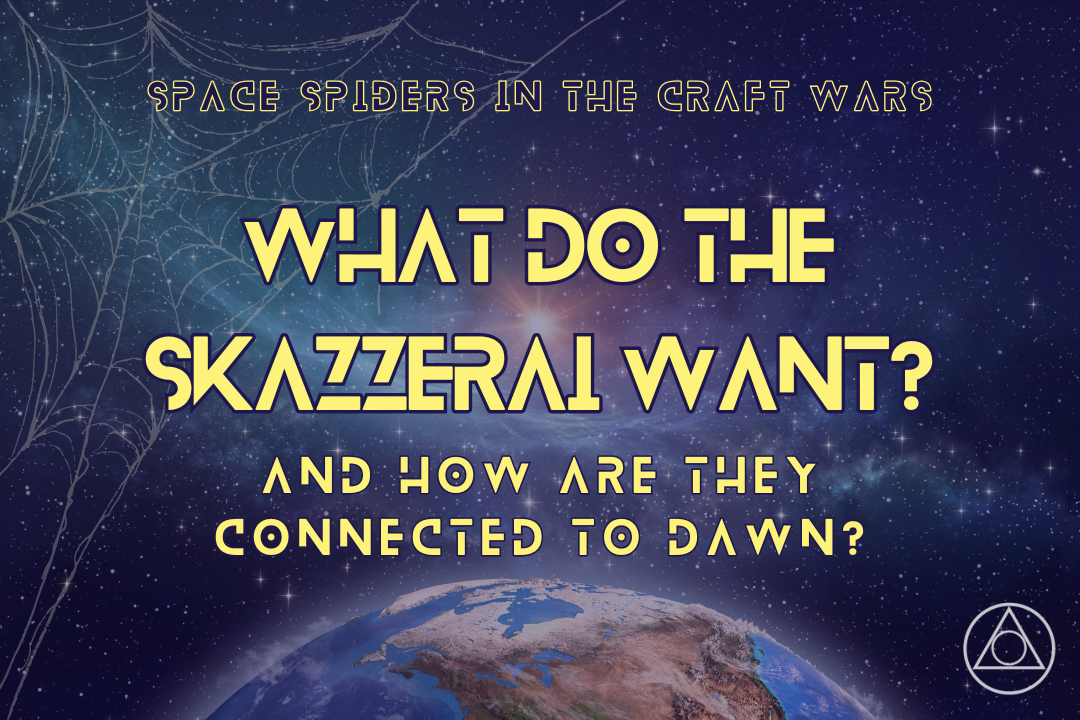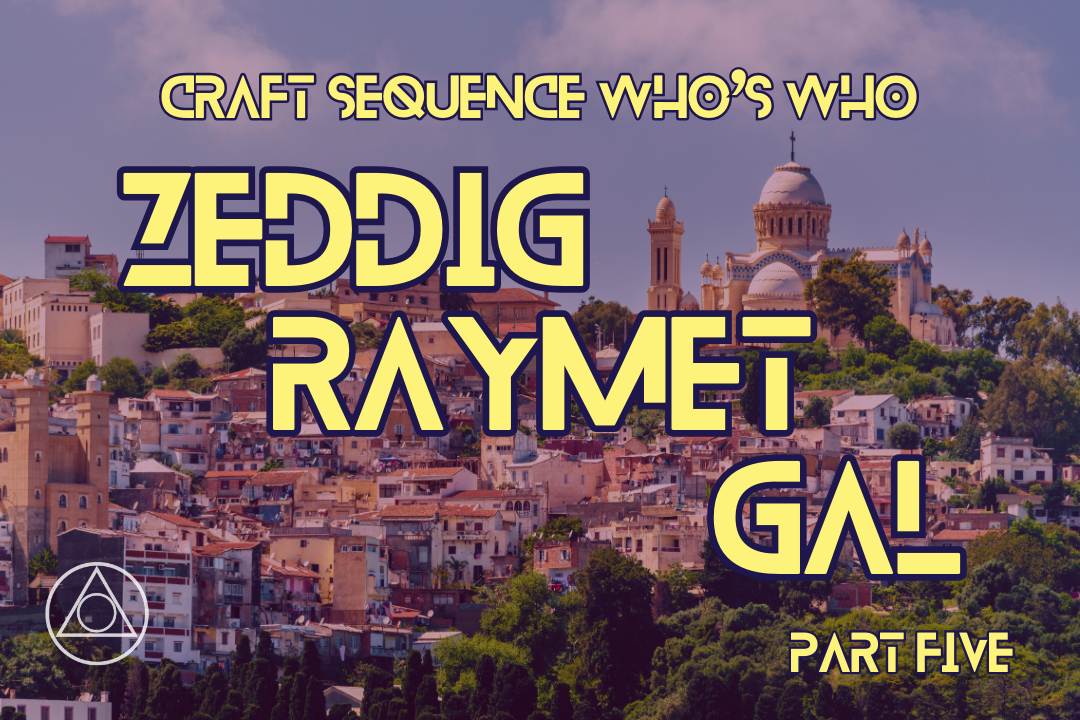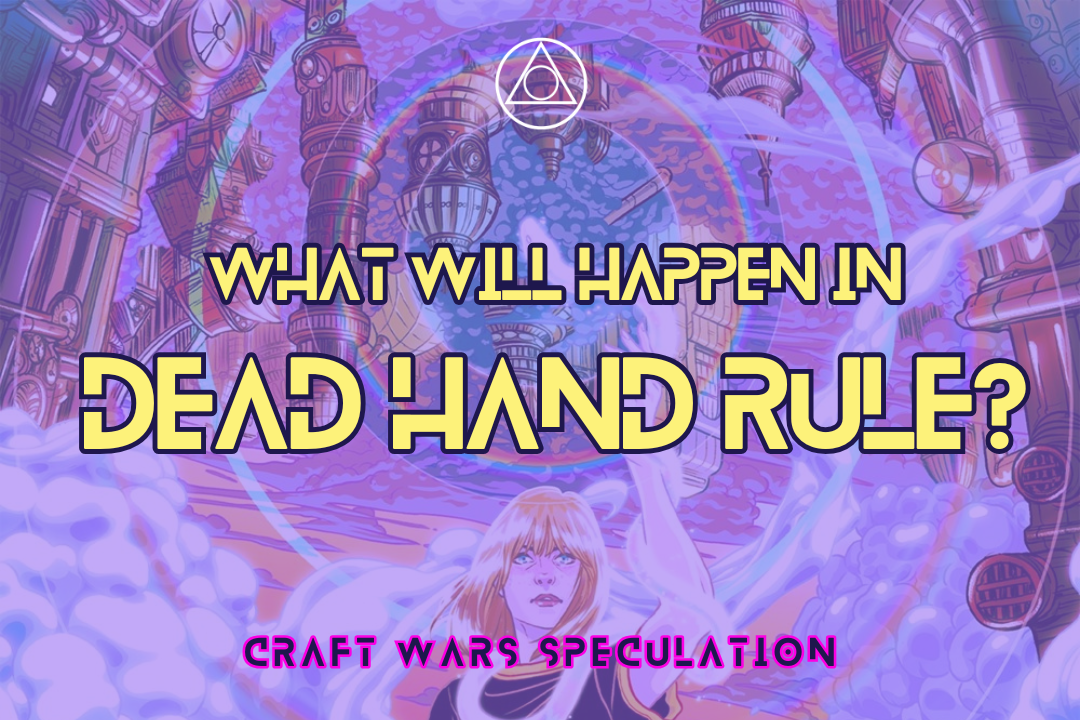Top 10 details from Man in the Middle
I can never get enough of the Craft Sequence, and when I discovered this short story I was THRILLED. In honour of Halloween, here are ten of my favourite details from this spookyish horrorish short story.
First of all, what on earth is ‘Man in the Middle’?
Man in the Middle is a short story set between Three Parts Dead and Four Roads Cross, published in horror anthology Shared Nightmares in 2014. I don’t believe it has been released separately, but if you find it do let me know and I’ll add a link.
Tara Abernathy, new in-house Craftswoman for the Church of Kos, moves into a new office outside the Sanctum - she needs space less warped by theology. But when setting up her new nightmare telegraph terminal to communicate with the priesthood, she gets a very strange and vaguely evil sounding error message. She dives into nightmares to debug the machine, and finds a God Wars era spy trapped in the nightmare-sphere.
It’s a short piece, but gives us a slightly different view on elements of the world we know so well. Let’s jump into my top ten details from the story (in no particular order).
One. Insight into Tara’s early days working with the Church of Kos
In Four Roads Cross, we are thrown into the deep end quickly. Between Denovo’s interment and the one year time jump to the start of the Ramp v Seril case, we don’t get to see much of the every day detail.
Tara says she’s been in Alt Coulumb for several months, which does strike me as a little odd as she is only just moving into her new office. As this was written quite some time before Four Roads Cross, I’m choosing to hand-wave this as later retconned by Gladstone, and she’s maybe been in the city for a few weeks max.
Although her new office is in property owned by the Church and overlooking Temple Green and the Sanctum, Tara was insistent on being off-site. She tells Abelard:
“You need a Craftswoman in-house to work sorcery and skullduggery for you. I’m happy to have the position. But I’m not a theist, and proximity to gods an warp unbelieving minds; there’s a gravitational effect, inverse-square law sort of thing. Also I’d like to keep a door open to private and pro bono clients—get to know the city that way.”
Love that she calls her own specialty skullduggery. Icon behaviour.
Tara also says she has bought equipment out of the Craft department’s operating budget; Abelard questions whether she even has a budget, and Tara chooses not to reply. Tara embodies “ask forgiveness not permission.”
Also, from the quote above, I am intrigued that she plans to take on non-Church clients! We haven’t heard this since, so again this may be something later retconned, but I do enjoy the idea of Tara doing side missions for clients. I think we need an entire series of short stories about that, actually. Someone call Gladstone and Tor.
Two. The population of Alt Coulumb
Small detail, but there is a reference to Sister Muriel overseeing the boilers and power coupling for the needs of 6 million Alt Coulumbites. The AC of Three Parts Dead always felt smaller to me than the impression I get in later books, so this clarity was very welcome.
Three. How the warding circle around the Sanctum was built
The existence of the warding circle around the Sanctum of Kos is a key plot point in Three Parts Dead (…and Dead Hand Rule), but we don’t learn very much about its construction in the books.
Here we find out that only Cardinal Gustave (and possibly a couple of other high level players, perhaps since deceased) knew the entire project. Acolytes and sub-contractors did heavy lifting, Abelard tells Tara, but only in isolated sections. This helps explain how few people seemed to know that the warding circle was to keep Seril out rather than Kos in; if almost nobody actually saw the schematics, they would have no reason to know that.
I do think a priesthood of engineers could maybe have asked a few more questions, but it was after the God Wars and everyone was very traumatised, so I’ll forgive them that.
Three. Tools and instruments for Craft
I do love how Gladstone has balanced the magic system, with enough detail that it feels fairly ‘hard’ but also with enough space to play around and not trap himself in tight storytelling corners. That being said, I’ve always wanted to know more about the tools of a Craftswoman’s trade ever since we got an accounting of Ms Kevarian packing up her belongings at the end of Three Parts Dead. For those who haven’t read it recently, this includes:
Three vials of ink (one silver, one red, one black)
Seven pens (three for contracting, one for cancellation, two more for professional work, and one used exclusively in personal discourse)
A silver bowl
A bell of cast iron
A box of bone chalk
Five blood candles
We don’t get insight into every one of these, but we do see Tara use a couple of Craft-y instruments. First, of course, is the nightmare telegraph terminal, which we will look at more later in the list. Second is a black candle, which she cuts to ten minutes exactly. She will remain in the nightmare for as long as the candle burns, and can’t come out until it’s gone out.
We also get a delightful reference to odd necromantic things in a box Abelard is carrying:
“One box teetering on the corner toppled to the floor, and the many scaly bony something inside hissed. He scrambled to right the box before the somethings escaped.
...
Abelard had levered the fallen box back into position with no harm done. Well—not much. A single whip-like tentacle of segmented bone slipped out of the box’s side to snare his wrist, needle-spines pressing in.”
What are these scaly bony things?? Why is there a tentacle of bone?? Is the tentacle also scaly?? What in Seril’s name is Tara doing with them?? Inquiring minds need to know!
Five. The postal system (or lack thereof)
I love little worldbuilding details like this. Tara says she wouldn’t need a nightmare telegraph terminal in the first place if “Alt Coulumb used rat post like a sensible city.” We see in Two Serpents Rise that rat brains are used as interoffice post in Red King Consolidated; it would be fitting in a vaguely NYC inspired setting to have rat post in the subways, wouldn’t you think?
Nothing Craft-y can communicate between the Sanctum and the outside world, which we learn through the story is due to the aforementioned God Wars era spy being trapped in the nightmare-sphere. How do they communicate, then? Prayer, of course. This leads Abelard to suggest Tara join the Church as a lay sister, because “Lord Kos will bind you to the community when you’re needed. All are one in faith.” Tara considers this extremely creepy, while using rat brains trapped in nightmares to communicate instead. To each their own, and all that.
Six. Where Kavekana actually is
This has been answered in AMAs, but I don’t think there’s been confirmation in text other than this, so: Kavekana is to the east of Alt Coulumb / Northern Kath, before you hit the Old World of Craft!Europe and Craft!Africa. The Skeld Archipelago, where Kavekana is situated, does not represent a real-world location, despite it seeming fairly Pacific Island inspired. It is, in fact, in the Craft version of the Atlantic Ocean - and further into the ocean than the Caribbean is in our world.
Seven. Nightmares about gargoyles
We spend part of the story inside nightmares, including the culmination of forty years of Alt Coulumbite nightmares:
“She broke into a thousand shards caught in a whirlwind of flame. Howls consumed her, and in faceted vision she saw a priest devoured by her parishioners, a temple and a city burning, immense stone monsters clawing buildings down, granite-fanged mouths descending to rend bared sweaty throats.”
We know from Three Parts Dead that Alt Coulumb went to war with itself following Seril’s supposed death at the end of the God Wars. The remaining gargoyles turned on the citizens and saw rebellion everywhere; they attacked people and buildings alike, and were attacked in return with hammers and chisels and Kos’ flame.
Whether the vision in the nightmare is an accurate representation of what happened, it is very clearly referencing that period of Alt Coulumb’s history:
A priest devoured by her parishioners - could this be gargoyles or other worshippers of Seril fighting against a Seriline or Kosite priest?
A temple and city burning - we know that the priests begged Kos to cast down the gargoyles in fire, and we can assume that the other battles also led to buildings burning.
Immense stone monsters clawing buildings down - these are obviously the gargoyles, and we know that many buildings in AC are scarred by their claws. The buildings without scarring were razed in full and rebuilt.
Granite-fanged mouths descending to rend bared sweaty throats - this is quite clearly gargoyles killing scared humans.
Whether this depicts the truth of the matter, or nightmares based on real trauma, it’s not exactly surprising the people were so scared of the gargoyles’ return.
Eight. Tara and Abelard’s friendship
Oh I do adore these two. They don’t, at this stage in their friendship, really get one another, but they are trying. Abelard is helping Tara move office, which is most definitely not his job, but rather something a friend would do. He stays with her while she descends into a nightmare, and rescues her when the nightmare turns particularly bad, by extinguishing the black candle. They bicker a bit about the Craft versus religion, but it’s light-hearted. Abelard reassures Tara that she isn’t a traitor, after the God Wars era spy accuses her of treachery.
And, my favourite bit, at the very end Abelard invites Tara to join him and a few other priests in a low stakes game of cards. My heart.
“Some of the technicians, I mean, we play cards on Fourthdays. Lightweight stuff, you know, for fun. Maybe you’d like to come sometime?”
“You won’t mind losing to a godless witch?”
“You won’t mind losing to ignorant god-botherers?”
She grinned. “You’re on. And thanks.”
Nine. God Wars espionage
When Tara goes into the nightmare-sphere to figure out why her machine isn’t working, she finds herself in the mind of a spy who got stuck behind the warding circle and has been trapped there ever since. While working out how to break the Craft that holds him there, she explains to Abelard what he might have been doing there in the first place.
Despite Seril joining the fight, Alt Coulumb under Kos was neutral in the God Wars. If the city did join, it could have tipped the scales against the forces of Craft. So, naturally, Craftsfolk paid a lot of attention to what was happening in Alt Coulumb. It’s difficult, Tara explains, to infiltrate a priesthood, due to the oaths of fealty and worship requirements. You could, however, potentially infiltrate through a non-clerical role. A receptionist, perhaps.
“Long late stretches with nothing to do, during which our agent could leave his body on autopilot and dream himself into priests’ nightmares, taste your fears, strain them for insight and intelligence. Until, one night while our spy was on patrol, the Cardinal completed his warding circle—trapping our itinerant dreamer in. Where he bloated, consuming terror until he occupied so much local dreamspace not even a simple transmission could pass through without being broken by his mind.”
Tara poses this as a hypothetical, but given she’s right and came to the conclusion so quickly, it seems likely that this was a relatively common form of Craft espionage, perhaps taught in history lessons at the Hidden Schools. Maybe it’s still used today - but counter-measures would also have improved, one supposes.
Ten. How the nightmare telegraph works
We’ve seen a lot more of the nightmare telegraph since this story. Kai delves into it in Full Fathom Five and meets Elayne Kevarian there; the King in Red uses dreamers as comms between soldiers on the ground and his command room in Last First Snow; Caleb is sent a nightmare directly to his brain as a call from his boss in Two Serpents Rise. It’s referenced even more, but we don’t get a great deal of detail.
We get a lot more here.
Tara is using two nightmare telegraph terminals, paired together. This is a two-way communication system rather that the broader telegraph network we’ve seen before. Maybe she could pair it with different devices for broader use?
We get this description of the “gleaming brass machine”:
“What is it?”
“Colberg-Arendt model C. Demonglass-toothed gears, reclaimed brass fittings, obsidian palimpset knife, seven-dimensional clockspring, adjustable soul draw.” She set the machine on the floor and sat cross-legged before it. Bone keys gleamed hungrily beneath their varnish, and the ball-hammer hovered over blood-red ribbon.
“It’s the best option. Paired quills need properly trained scribes; we could use watches, but for some reason the Church doesn’t like to use professional dreamers for transmission and processing.
“It’s the screams, I think.”
“That’s what the gags are for,” she said. “Anyway, this avoids the problem. The paired machine’s back in Maintenance. I showed Sister Muriel how to use it yesterday.”
“Paired how?”
She tapped the bell jar nestled beneath the keys. A knot of grey matter floated there, suspended in bubbling amber fluid. “Rat brain. One here, one back at Muriel’s, entangled via nightmare. I type, the terminal translates what I’ve typed through the brain into nightmare, and it comes out the other end.”
“That’s sick.”
“We wouldn’t have to do this if Alt Coulumb used rat post like a sensible city.”
Tara types out a message on the keyboard, but we don’t get to see the machine work properly. There, is after all, a ghost in the network. The error is, in classic Craftwork style, pretty creepy:
“The terminal screamed a scream of nails and knives and too little grease. Gears scuttled. Lightning crackled in recessed tubes. Amber fluid bubbled faster as the brain within convulsed. The ball-hammer struck ribbon and parchment with the sickening sound of nails pounded into flesh.
OOOAZX$%KKKK877332332MAKETHESCREAMSTOP
...
SEVENSUNRISEOVERDESSICATEDPLAINTHEPYRAMIDBURNSTHEWATCHERSWITHINTWISTANDSCREAMTHEYKILLGODSTHEREDONTTHEY”
Delightful.
The nightmare message seems to be coming through in an otherworldly language, as Tara thinks that “The Kathic alphabet and mathematical symbol set weren’t well suited to Abyssal dialects, but the nightmare telegraph had made a copyist’s best effort.”
So! That’s how a small scale nightmare telegraph works, and I’m genuinely thrilled to read it.
Those are my top ten details from Man in the Middle - did I miss anything that you particularly enjoyed?
What do you think? Let me know - and don’t forget you can subscribe to be the first to hear about new articles and fun projects in the pipeline. Like what we do here? Tips welcome on ko-fi to help pay for the site!






























